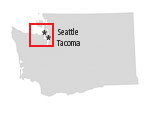







 |
 |
 |
 |
 |
 |
 |
 |
 |
Gimme an A (sharp) I am a musical genius. I know because a child’s computer game told me so. The on-screen game consists of listening to a tune and simultaneously pointing where the notes should go on the musical scale displayed. I do as the game instructs and feel anxious about getting it right. “Congratulations!” the computer says in its simulated human voice when the tune is finished, “You are a musical genius.” The interactive game, however, does not take into account that I am not under eight years old. And that I can read music, thanks to lots of childhood piano lessons. And that the song I have just traced on the screen is “Twinkle, Twinkle Little Star,” a tune I played when I was the age that the computer thinks I am. I am rather proud though. What a sense of accomplishment. Oh, too bad, a group of children are invading the room and the high decibel enthusiasm distracts me from moving out of the ”beginning” level of the game to the “intermediate.” It’s just as well. I wouldn’t want to fail a child’s game. I am at the Seattle Symphony’s Soundbridge, this marvelous “hands-on” interactive sound lab that the Seattle Symphony and Microsoft, partnering with several Seattle businesses and foundations have created. I leave the children’s workshop space to the gang of tiny two to five year-olds and move on to the other exhibits. Kiosks with large monitors display various music aspects of a symphony. For instance, if you want to know what different horns sound like in the brass section, you simply touch a selection and the instrument will appear on the screen with its own personal timbre. You can choose within the range of instruments too—solo, combo, full orchestra. The hardest for me is the strings exhibit, trying to distinguish the bass from a cello. The music experimenters like me are a varied bunch, from a couple of older ladies who brought their grandkids in, to the teenage guy who is mesmerized conducting an orchestra in front of a semi-surround monitor. A counter full of computers lines one wall, where I sit on a stool in front of a monitor, put on the headset, and scroll through hundreds of CDs. Highlight a composer, title, arrangement or artist, and the best recordings of the selection is played. I could spend years going through these archives. I’m meeting friends for lunch, so I take a bus uptown to the monorail and zip out to the Seattle Center arriving at architect Frank Gehry’s amorphous metallic blob that is the Experience Music Project. I have a few minutes before my friends arrive, so wander in the strategically placed gift/music store. Here, I don headphones again. What fun. From Stravinsky to Kurt Cobain in just a short hop across town. My friends, John and Steph, arrive and before we partake in experiencing
more music, we experience lunch. Great salads, Whidbey Island
mussels and wild mushroom tarts. After experiencing Jimi, we meander through the amazing guitar gallery and rather pathetic displays of the Beatles, Bob Dylan, Joan Baez, and Janis Joplin. Friend John has disappeared, and Steph wants to linger in the “rap” gallery, so we agree to meet later at the Liquid Lounge, and I remove myself to the Sound Lab. The Sound Lab has multiple booths for recording. I think maybe I’ll get to sing a little, but all of the vocal recording booths are occupied, as are all the drums, keyboards, and mixing booths. There is one guitar booth available. I’ve had little incentive to learn the guitar, save for one summer when I was nineteen and a younger friend of fifteen was trying to teach me. I gave up fairly soon because it was so difficult to transport the guitar on my bike, my only means of transportation that summer. So I am in the sound booth looking at a white electric Stratocaster guitar, and thinking, “ Oh, Jimi.” But what comes up on the monitor for me to try? “Louie, Louie.” I’m going to learn to play the guitar to “Louie Louie?” I adjust the guitar, conveniently placed on a movable arm for doing so, and begin my lesson. I am instructed to find a pick—there are several available—and then pluck the one string. I pluck away, and then the monitor instructs me to strum a little faster in time to the beat. OK. I’ve got the feel for strumming that one string. Now, I must manipulate my left hand fingers on the fret while strumming with my right hand. This is pretty simple since the adjustments to the fret are illuminated when it’s time to emphasize different fingers. After some practice, I’ve got it. And then the whole piece comes up. I am playing the guitar to “Louie, Louie.” Gee, my mom would be so proud of her musical genius being able
to simulate “Twinkle, Twinkle, Little Star” and strum “Louie,
Louie.” All those childhood music lessons really paid off. The Seattle Symphony Soundbridge in Benaroya Hall at 2nd Avenue & Union Street. 206.336.6600 www.seattlesymphony.org Experience Music Project (EMP) at the Seattle Center 325 5th Avenue N. 877.454.7836 www.empsfm.org
|